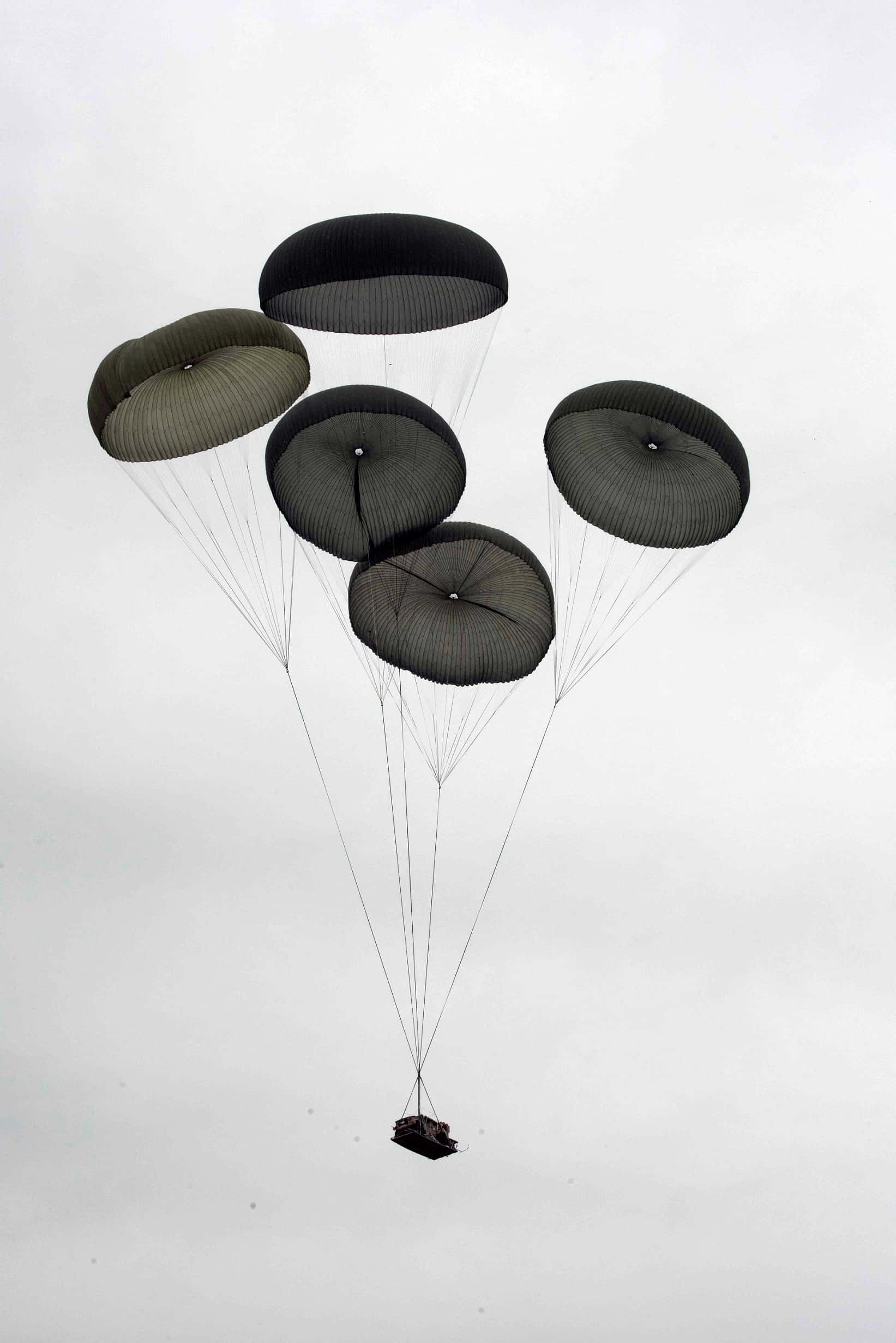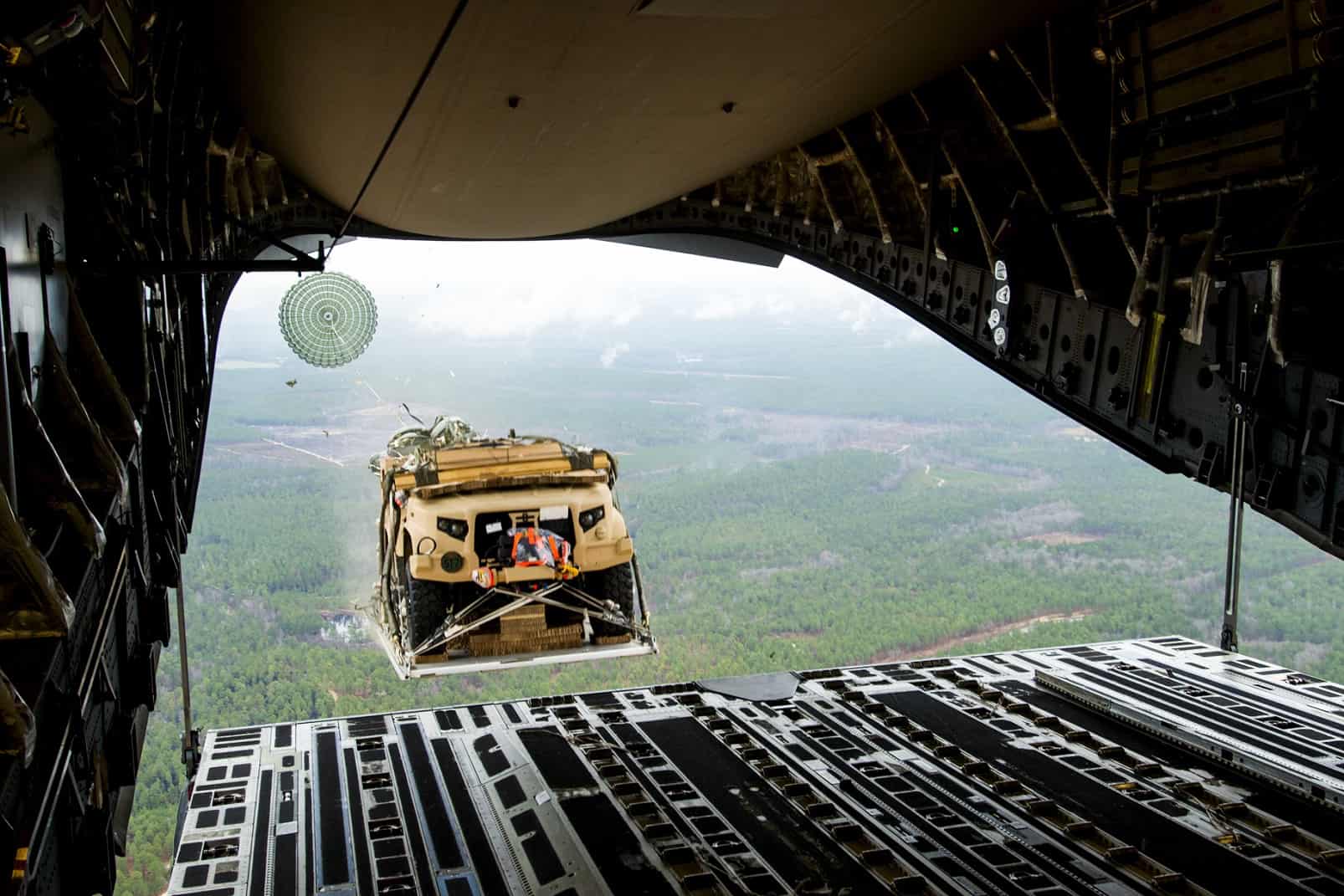U.S. Army conduct airdrop test of new JLTV
Posted on
The U.S. Army has reported that 82nd Airborne Division Soldiers are in the final phases of airdrop testing five configurations of the Joint Light Tactical Vehicle (JLTV).
The JLTV Family of Vehicles is a joint military program that will partially replace the High Mobility Multipurpose Wheeled Vehicle (HMMWV) once fielded.
During the test, Soldiers from A Company, 407th Brigade Support Battalion, 2nd Brigade Combat Team, 82nd Airborne Division, rigged, airdropped, and recovered the JLTVs on the drop zone along with the U.S. Army Operational Test Command’s (OTC) Airborne and Special Operations Test Directorate (ABNSOTD).
“Multiple configurations with both light and ‘up-armored’ JLTV models are air-dropped, then road tested to ensure they are still operational and fully mission capable after reaching the ground,” said Mr. Wayne G. Lovely, Military Test Plans Analyst, Airborne and Special Operations Test Directorate, U.S. Army Operational Test Command.
The test team is conducting 15 low-velocity airdrops of the vehicle — three drops per configuration.
JLTV air drop testing began with Soldiers taking operators and new equipment training by trainers from Oshkosh, the vehicle manufacturer.
During the JLTV operator’s training, paratroopers were trained in vehicle operation, employment, troubleshooting, and maintenance.
“New equipment training ensures paratroopers are adequately trained to operate the vehicle under test,” said Lovely. “Once testing begins, the paratroopers are capable of acting as both operators and maintainers of the vehicle.”
Pvt. Rylan Brown, a Signal Support Systems Specialist from A Company, 407th BSB, 2 BCT said he looks forward to his unit receiving the new JLTVs that will be replacing the HMMWVs this summer.
“I am glad to be part of the development of the JLTVs airdrop rigging, and would share his knowledge and ability to rig them with others in his company,” said Brown.
One ABNSOTD Project NCO in its Aerial Delivery Rigging Branch explained the importance of airdrop testing new Army equipment.
“Every piece of equipment Soldiers use has been independently tested and evaluated to meet current and future Army needs and requirements,” said Staff Sgt. Eric Danisa. “Air drop testing goes further to make sure equipment still works after airborne operations.”
“Operational testing is about Soldiers,” said Col. Bradley Mock, ABNSOTD director.
“It is about making sure that the systems developed are effective in a Soldier’s hands and suitable for the environments in which Soldiers train and fight,” he added.
“Operational testing is OTC’s opportunity to contribute to readiness; anything less compromises the Army’s ability to provide the forces that fight and win the nation’s wars.”
OTC uses typical Soldiers to determine whether the systems are effective, suitable, and survivable.
“Every piece of equipment Soldiers use has been independently tested and evaluated to meet current and future Army needs and requirements,” said Lt. Col. Gregory Oquendo, chief of ABNSOTD’s test division.
The ABNSOTD works with test units to incorporate the system under test into their actual missions and training requirements, according to Mr. John H. Miller, Test Division Aerial Delivery Branch Chief.
“Leaders of units involved in testing have the first look at new systems, which may also drive changes to operations and doctrines,” he said.
“Tests are unit-led, which translates into coordinated control under realistic operational environment scenarios.”
According to Mr. Sherman Jennings, an OTC test officer in its Maneuver Sustainment and Support Test Directorate, a combined 58,000 JLTVs will be purchased by the Army and Marine Corps once all stages of testing are completed and the vehicle is approved for production and fielding.


Subscribe to our newsletter
Promotions, new products and sales. Directly to your inbox.
